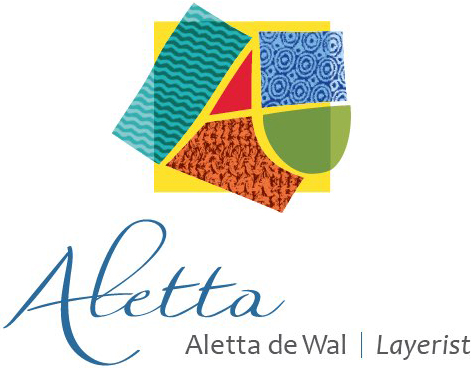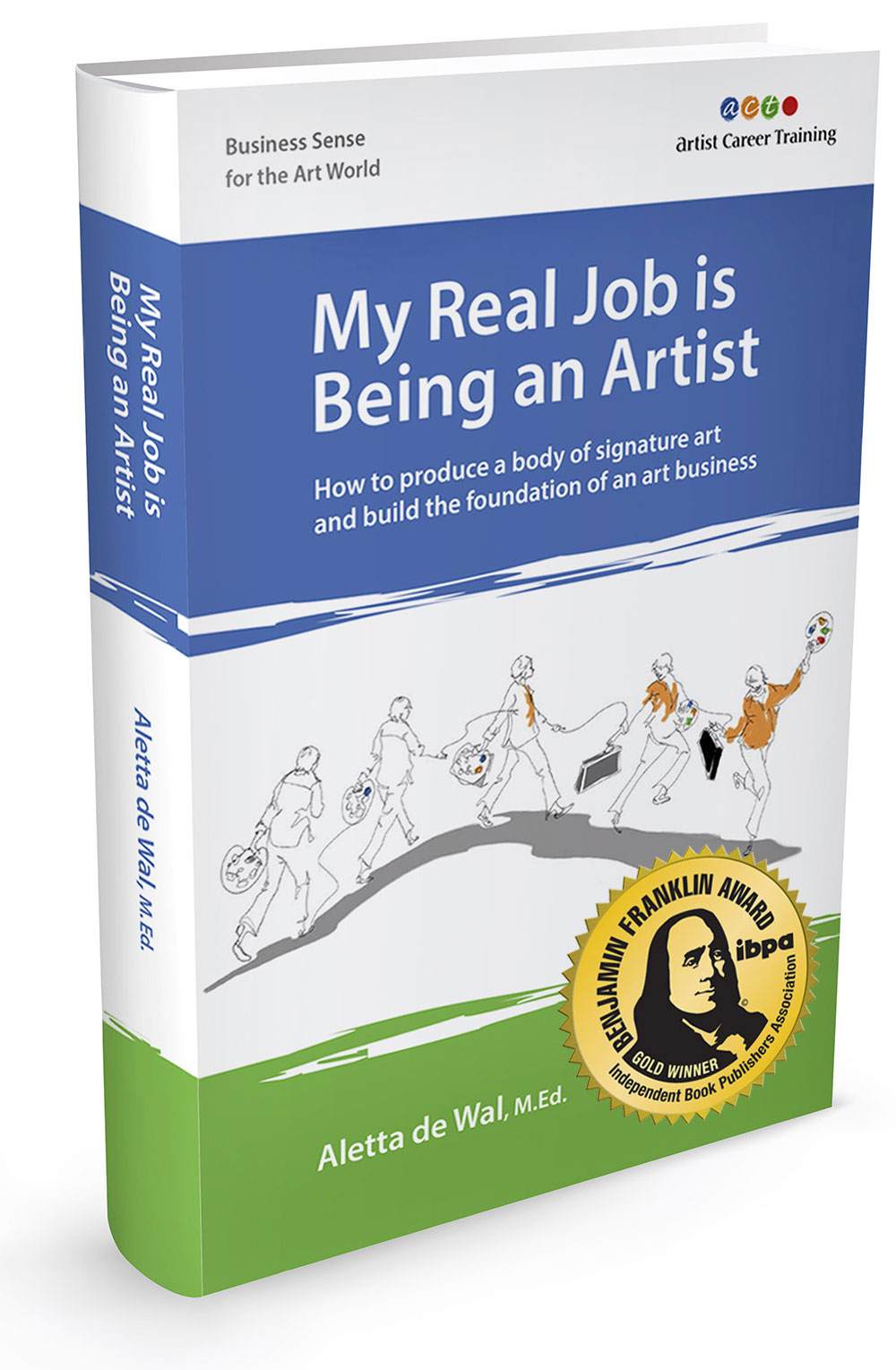BilHenry Walker Builds 3-D Art With Light, Color and Kinetics
There is often additional information on the recording that is not in this written interview. Inspire yourself and listen while you make art.
__________________________________________
My primary goal in these interviews is to inspire you with stories of people who make a living making art and who consider it "a real job." Your art and art career may be on a different path, but there is always something to learn from the experiences of your colleagues.
 Bilhenry Walker has been making sculpture since 1975 when he began making 3-D versions of his paintings. Eventually, Walker made the move into 3-D, put away the paint and has been developing his sculptural voice ever since. He has moved from acrylic to polyester-resin and now is making both pedestal and monumental sculptures out of fabricated aluminum.
Bilhenry Walker has been making sculpture since 1975 when he began making 3-D versions of his paintings. Eventually, Walker made the move into 3-D, put away the paint and has been developing his sculptural voice ever since. He has moved from acrylic to polyester-resin and now is making both pedestal and monumental sculptures out of fabricated aluminum.Walker's large sculptures, up to 20 feet tall, have been exhibited at the Convergence International Art Festival in Providence, RI (4x); 3-D Chicago at Navy Pier; downtown Fort Lauderdale FL, Louisville KY, Milwaukee WI, Bridgeport CT, and West Palm Beach FL to name a few.
A.C.T.: What prompted you to start your professional art career?
"I dabbled with painting lessons as a boy. After college, I searched major museums of Europe for a crash course in the art of western civilization. While working as a security guard at the old Pasadena Art Museum in 1968, I met Bob Irwin, Ernie Terrell, and John McCracken, who were well-known Southern California artists. After observing their work for some time, I felt I could build on their aesthetics with ideas of light and space that I had been developing on my own. Their ideas on perception and use of light intrigued me and led me to build my first set of three-dimensional paintings."
A.C.T.: What makes an artist professional?
"I felt like a professional artist when I quit my 9 to 5 job as a social worker in 1972 and devoted myself to making art full-time. This meant living on a shoe-string and prioritizing the making of art over the making of money. I was able to live on the income from part-time jobs in order to maximize my art-making time. Eventually, I discovered I was un-employable in the greater job market despite the skill sets I had learned. This served to harden my resolve to follow my muse regardless of where it led. In a sense, I have unwittingly created my own art-trap and have become both victim and victor of all my art decisions."
A.C.T.: What is your artistic direction? How has your art evolved over the last 30 years? What legacy do you want to leave?
"The theme threaded through most of my work is the creation of three-dimensional objects with an elusive quality that cannot be described from any one point of view. The pre-requisite to understanding my work is that it be viewed from all points of the compass.
 |
| ©Bilhenry Walker Atomics Cloud, 1985, Polyester Resin, Marble base, 55"T |
"In my clear acrylic sculptures, created in the 70s, inner spatial images were contraposed to the fixed parameters of outer minimalist shapes.
"In the 80s, I got into Poly-resin casting and experimented with embedding shapes within shapes, creating both dissonance and light-enhanced distortions. Some of these pieces assumed monumental proportions of up to 12 feet tall.
 |
| ©Bilhenry Walker Inuit's Bone Sequi III, 18'T x 6'W x 5'D, Powdercoat Aluminum |
"In the 90s, I finally turned to aluminum in order to build sculptures of scale. These pieces are built from straight struts joined at the miters with nuts and bolts. The affect is to create a sculptural line in space, describing various planes and shapes which morph into new ones as the viewer walks around the sculpture. These sculptures can also be described as sculptural calligraphy with an interchangeable syntax.
"I am still building monumental sculptures in aluminum, but I am gradually moving from non-objective work to abstract figuration.Some of my more recent pieces have kinetic elements that are wind or motor-driven.
 |
| ©Bilhenry Walker Solar Synapse, 1997, Kinetic, Aluminum, 17'T x 18'W x 8'D |
The kinetic feature amplifies the re-combination of shapes as one walks around the sculpture.
"Although I am currently experimenting with neon and "green" sculptures, I continue to develop my aluminum sculpture techniques as I move toward abstract figuration. While I love much of my early work, especially the embedment casting of stones in poly-resin, I believe my reputation is being made with sculptures of scale, as these are being shown in various U.S. venues and in England."
"Although I am currently experimenting with neon and "green" sculptures, I continue to develop my aluminum sculpture techniques as I move toward abstract figuration. While I love much of my early work, especially the embedment casting of stones in poly-resin, I believe my reputation is being made with sculptures of scale, as these are being shown in various U.S. venues and in England."
A.C.T.: What is your art business direction and what are your business goals?
"When I first got into the business, I was interested only in being exhibited in galleries and museums. Thirty seven years later, I decided to follow the example of a friend who exhibited his sculptures in street shows. I gravitated to this approach, because I could be more in control of where to show and was able to mediate my work directly to the art public. I pursued these shows for several years until I realized I was barely paying expenses. In evaluating this, I surmised that my work was too expensive for the "street" and was not being viewed by enough collectors of non-objective art. Sadly, I ended this phase in 2007, although I loved doing it.
"In 2006 I created a series of models of sculptural furniture, which I began exhibiting along with my sculptures. I created greater interest with this new work, but, again, found it much too expensive for the street venues. This led me to the Architectural Digest Home Show, the International Contemporary Furniture Fair in New York City and to the AD Boutique show in Miami. These venues are significantly more expensive, but they have allowed me to show my work to the top designers and buyers in the country. As a consequence, I have developed a significant network of designers and architects who are interested in involving my work in their proposals. This means that a show is both about selling to end-users and developing a net-work of "salesmen" to create ongoing business. If I sell nothing at a show and yet find several designers who want to promote me, the show has magically become a success instead of a "hangdog" failure.
 |
| ©Bilhenry Walker Book Case Sculpture Base. Welded aircraft aluminum with a satin-steel powdercoat. 30"H x 12" x 13" |
"I have gradually placed work in furniture show-rooms such as Mike Bell Inc. in the Merchandise Mart in Chicago and in galleries such as Art Rouge Gallery in Miami, the latter of which exhibits both monumental and human-scale sculpture. These have been good bases from which to sell work and create new work for.
"I am also planning shows at large venues such as Art Expo New York and Art Chicago, in which I hope to exhibit a combination of paintings and sculptures under the banner of Bilhenry Gallery. Since these shows are quite an investment, I will share expenses with painters and take a marginal commission on their sales. This sharing of expenses with other artists is a practical solution for getting our work seen in the biggest venues possible."
A.C.T.: Please describe a typical day, and a typical month so readers can understand how you manage your time, money and energy.
"Each of the last five years has been dramatically different. This year I have trimmed down my schedule to just two shows -- the Architectural Digest Home Show in March and 'Sculpt Miami' at Art Rouge Gallery in December. This has given me a lot of time to finish several small commissions and to create new ideas for next year -- a break I heartily welcome. I have also had time to promote my work to potential buyers and compete for the commission opportunities that always seems to take a back seat to everything else.
"I typically work 6.5 days per week, 9:00 a.m. to 6:30 p.m. and take only 'working' vacations. Managing my money is in effect, managing my debt. I make no large equipment or material expenditures without a commission to pay for it. This has also limited the number of shows I can enter. When I have no available cash to build new sculptures, I build models for new projects and organize my studio and image files.
"Most recently I spent several months building a new marketing program to more effectively reach my base of collectors and dealers.
"After my cardiac surgery, I will return to sculpting a new series of neon sculptures adapted to old forms. I hope to have three pieces ready by the December and January exhibitions in Florida."
A.C.T.: What peak moments have you had as an artist?
"My peak moments occur when I finally assemble a sculpture and find it is better than I ever imagined it could be. I get the same feeling when I labor over a model for weeks and it finally turns into something far greater than the drawing.
"Just recently I installed a sculpture at Leicester University in England and it looked wonderful in the place of honor it was given.
"All these moments certainly make sculpting a joy to look forward to and keep me ever committed to the path I have chosen."
A.C.T.: How do you define success and how do you celebrate it?
- "The most primary level of success for art-makers is to translate an idea into a substantial form that you can call "finished."
- The next level is to find collectors and dealers who agree with your vision and support your effort.
- The final level of success for the artist is to be able to support oneself and one's family with his art.
"Everything else is a crap-shoot and should be pruned from the artist's list of needs and wants. Making art is a hard, life-consuming occupation with modest rewards and guaranteed disappointments.
"With every sale I breathe a sigh of relief and pay down debt if possible. I also count the months the sale will support me."
"With every sale I breathe a sigh of relief and pay down debt if possible. I also count the months the sale will support me."
A.C.T.: What obstacles have you encountered in your art business and how have you handled them?
"My earliest obstacle was not having been professionally trained in art school. Much of what I have learned has been through trial and error and whatever I could glean from professionals working outside the art establishment. To my credit, I am a quick study and am easily mentored.
"Being rejected from shows and loosing out on commission opportunities is normal fare for the art business. The answer for me has been to keep on churning out applications and taking my chances along with every one else.
"My background in sales has been of immeasurable help in keeping the highs and lows in perspective."
A.C.T.: What opportunities has a professional approach to your career brought you that you might otherwise not have had?
"I have been able to build a career in the area I love most and make a living from it. I am always in position to make a big score but am most happy building new ideas and experiencing personal growth.
"I have done shows across the USA and, recently, England, giving me a more cosmopolitan outlook on the life and trends of this country. By taking a short teaching job at Bethel University in St. Paul, MN I created a wonderful sculpture and met an even more wonderful woman who eventually became my wife. What more could I wish for from a three month temporary job?"
A.C.T.: Who are your role models and mentors? What was the best advice they gave?
"Hal Glicksman, the show preparator at the Pasadena Art Museum in 1968, told me to always push an idea to the end of my mind before actually building it. By following this advice, I have generally avoided building developmental pieces and wound up with only the best I could make. It has served to accelerate my growth since I am always building on my best ideas and not wasting time with the 'in-betweeners'.
"Sculptors who have influenced my thinking are: Richard Serra, John Henry, and Mark DiSuvero."
A.C.T.: What is your art marketing strategy? What promotional materials and actions do you use most often?
"I have used the internet since 1995, when I initially brought www.bilhenrygallery.com on-line. I was the first gallery in the city of Milwaukee to do so and can remember trying to convince other galleries to follow my lead. None did for several years. In addition to highlighting my own work, my online gallery has allowed me to represent forty sculptors and ten painters world-wide and has brought in a modest stream of business.
"Recently, I began video taping my sculptures and furniture, posting them to www.vimeo.com/bilhenry/videos. When I send out an email campaign I focus on a new sculpture or piece of furniture and invite everyone to see the video. This gets my work before my audience, for a minute's worth of attention. And a designer presenting my work to a client is able to make a stronger sales presentation with the video than with a single image.
"Finally, I apply to various venues that are jurying sculptures for year- long exhibitions. These usually pay rental fees in excess of $1000 and provide an ongoing source of revenue for monumental sculptures that are unsold."
A.C.T.: What changes have you experienced in the art market and how have you navigated them? What lessons have you learned?
"I have responded to poor returns from 'street' shows by dropping them for more expensive indoor venues where I am finding an audience. I have had to find multiple methods of exposing my work to the public in order to make a living."
A.C.T.: What legal measures do you take to protect your work? Have you had to take legal action?
"I have not registered copyright on either my sculptures or furniture. I deemed it a waste of time and money, especially if I must resort to attorneys to protect my claims. As a public artist, I expect to be copied. As a good artist I expect to lead the way and stay well ahead of the copy cats.
"I enter into clear contracts which detail the responsibilities of both artist and gallery in the art-selling process. I am also clear with the gallery and/or customer what the commission schedule will be for creating a made-to-order piece. This takes the mystery out of the commission process and helps to formalize the contract in question.
"My only legal problem has been with an artist I represented in the seventies. This artist attempted to remove her work from my gallery the week following her opening. She eventually got an attorney to negotiate a settlement with my attorney: the artist gave me two paintings to cover my costs and loss of business for the privilege of removing her work."
A.C.T.: What advice would you pass on to artists who want to succeed in any economy?
"Don't consider any venue to be too demeaning, especially if you don't have anything better. It is better to make a deal with a prospective customer than to sit with your work at your studio. Every sale puts another piece of yours into a private collection which can lead to further sales.
"If you qualify, get a job as a college-level professor and use all the perks that come with it to build work and exhibit throughout the University system. That will provide the fastest and securest track to building a career in art in academia. You will also have a pension when your teaching career is over to further support your art ambitions."











